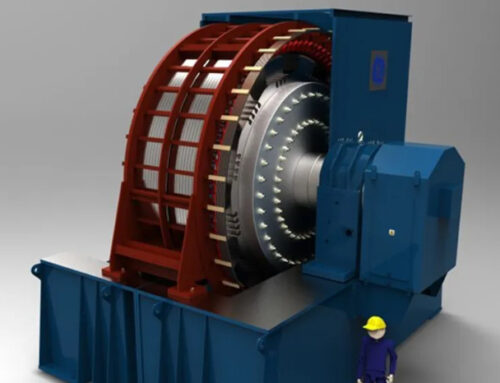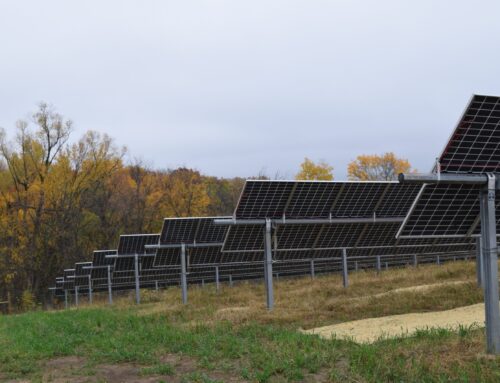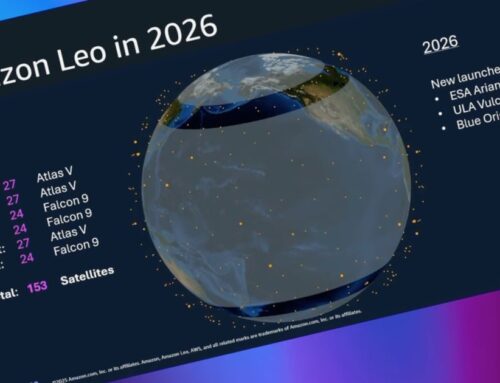Hawaiʻi’s Pledge To Free Itself From Fossil Fuel Hits New Roadblocks
April 25, 2025
The state’s promise to produce all of its own electricity by 2045 faces mounting obstacles in the form of tariffs, a hostile Trump administration and a financially troubled utility.
Policymakers, from the governor to utility regulators, are pushing to stay on track. But some changes now on the table could mean higher electric bills and a compromise that renewable energy advocates don’t like.
Lawmakers have two bills still alive to address the challenges: one would help shore up Hawaiian Electric Co.’s credit rating; another would backstop financing of big wind and solar farms.
Both would impose additional fees, at least temporarily, on customers who already pay among the nation’s highest rates for electricity.

Gov. Josh Green has issued an executive order to accelerate the state’s progress to its 100% renewable energy goal, signed in January. And the Hawaiʻi Public Utilities Commission has announced initiatives to implement it.
“We knew that the path was never going to be a straight line.”
Jeff Mikulina, climate and social impact strategist
But renewable energy activists say other actions have gone in the wrong direction. The biggest controversy involves the Hawaiʻi State Energy Office. The agency has been making the case to use liquefied natural gas as a lower-carbon, less expensive alternative to high-sulfur oil: an idea rejected by Gov. David Ige, who signed the renewables mandate into law in 2015.
Jeff Mikulina, a climate and social impact strategist who helped craft the state’s energy policy, acknowledged that the state’s dream of energy independence faces hurdles.
“We knew that the path was never going to be a straight line,” he said. “And this is just a plot twist keeping things interesting. I think we’re in a valley a little bit. But we’re going to get back on course.”

Reaching the state’s goal depends on building large-scale solar and wind farms, developed by big energy firms, known as independent power producers. Those firms pay to build the facilities and enter contracts to sell power wholesale to HECO at prices approved by regulators.
Rooftop solar is also a major element, but the industrial-scale facilities are essential, especially on power-hungry Oʻahu. Another component includes large-scale energy storage systems that can provide power when there’s no sun or wind.
HECO is now seeking proposals from developers for more of these big projects to replace fossil fuel-burning generators.
One potential obstacle involves President Donald Trump. Earlier this month, Trump issued an executive order to eliminate “burdensome and ideologically motivated ‘climate change’ or energy policies that threaten American energy dominance and our economic and national security.”
The document orders the U.S. Attorney General to identify and stop state energy policies “purporting to address ‘climate change’ or involving ‘environmental, social, and governance’ initiatives, ‘environmental justice,’ carbon or ‘greenhouse gas’ emissions, and funds to collect carbon penalties or carbon taxes.”
Although Hawaiʻi’s mandate cites the economic goal of promoting energy independence rather than addressing climate change, supporters have long pointed to the law’s environmental benefits.
The mandate runs counter to Trump’s goal of promoting “domestic energy resources — particularly oil, natural gas, coal, hydropower, geothermal, biofuel, critical mineral, and nuclear energy resources.”
Whether the federal government can block Hawaiʻi’s law remains to be seen. Hawaiʻi Attorney General Anne Lopez’s office is aware of the order and is reviewing it, according to spokesperson Toni Schwartz.
It doesn’t help to have “radically shifting federal policy on top of a multi-layered cake.”
Jim Kelly, spokesman for Hawaiian Electric Co.
Trump’s tariffs on imported goods, including up to 145% on goods from China, create another impediment. Although recent news reports have said the White House is considering cutting back its China tariffs, nothing has happened yet.
Most items used by HECO energy projects come from the U.S., said Jim Kelly, a spokesman for Hawaiian Electric Co. The problem, he said, is that many components are made overseas, so tariffs can drive up costs significantly. The price for a valve bought from a U.S. supplier but made in China, for instance, rose from $22,600 to $48,600, Kelly said.
With the challenges Hawaiʻi faces already, Kelly said, it doesn’t help to have “radically shifting federal policy on top of a multi-layered cake.”

Isaac Moriwake is a longtime proponent of renewable energy as managing attorney EarthJustice’s Mid-Pacific Office in Honolulu. He said it makes sense to separate federal policies from state and local ones over which Hawaiʻi has more control.
“The federal stuff, that background challenge, it’s horrible but has to be dealt with separately,” he said. “All the more, states have to step up and take leadership.”
One Hawaiʻi initiative involves financially shoring up HECO, which is central to implementing Hawaiʻi’s policies.
The 2023 Lahaina wildfire, which the company was found to have started, stifled progress. The utility had to raise just under $2 billion to settle more than 1,000 wildfire lawsuits. Rating agencies slashed the company’s bond rating from investment grade junk status after the fires, which means it will cost the company more to borrow money for wildfire mitigation.
That’s brought a halt to some renewable projects. With HECO as the buyer on contracts used to collateralize loans, the power producers say they must pay higher interest rates to borrow money to build wind and solar farms — if they can borrow at all. The producers say their borrowing costs get baked into the wholesale contracts with HECO, and get passed to customers.
The situation is so bad a developer of three major projects slated for Oʻahu and the Big Island bailed out last year.
To address this issue, lawmakers are trying to create a fund to backstop the contracts, known as power purchase agreements, or PPAs, between the independent power producers and HECO in case HECO defaults. Customers would be on the hook for paying into the fund.
One of the state’s largest producers of renewable energy, AES Hawaiʻi, laid out the situation facing the producers in testimony for the bill. Given HECO’s current non-investment grade status, AES said, it’s imperative that AES and other big developers that have contracts with HECO have a fund to backstop the contracts.
The legislation would ensure producers can get “the best possible financing terms for renewable projects,” AES testified. It includes a provision to refund money to customers when HECO’s credit rating is restored.
That bill is scheduled for a conference committee hearing Friday.
Another bill would allow regulators to impose a fee on residents to help HECO pay for wildfire mitigation and further shore up its credit rating. The bill is inching forward. Lawmakers want to give the public a chance to see the final conference draft before lawmakers approve it, Sen. Troy Hashimoto, the Senate conference committee chair, said during a brief conference committee hearing on Thursday.
Rep. Nicole Lowen, Chair of the House Energy Committee and lead House negotiator on both bills, said details of the measures are still being finalized.
“Everything is a work in progress,” Lowen said.

The executive branch also is pushing ahead. In January, Green issued an executive order to speed progress toward Hawaiʻi’s renewables goal.
Beyond pushing for big solar and wind farms, it calls for fast-tracking development of rooftop solar, ordering the state to facilitate at least 50,000 new solar installations for low- and moderate-income residents before 2030. The eight-page order also calls to provide direct bill savings to low- and moderate-income households in areas where big solar and wind farms are located.
The Public Utilities Commission has weighed in with a plan to implement Green’s order, including plans to expedite review and approval of power purchase agreements.
“Given the compelling public need, critical energy infrastructure development should not take longer than three years.”
Hawaiʻi Public Utilities Commission
In a separate document, the PUC offers what it calls a roadmap to guide and track development for the next decade.
Among other things, the 14-page paper calls for more rooftop solar and for speeding up the process of getting big projects up and running. The current five-year timeframe for building renewable facilities, the commission says, is unsustainable.
“Given the compelling public need, critical energy infrastructure development should not take longer than three years,” the paper says.
The PUC declined interview requests for this article. Green also declined to comment.

As Green issued his executive order, the Hawaiʻi State Energy Office released a study on ways to reduce the use of oil to feed as the state transitions to renewables. It identified liquefied natural gas as the best choice to reduce carbon emissions, lower costs and attract needed capital.
To make LNG, producers super cool natural gas into a liquid form, which can be transported by tanker and re-gasified at its destination to use as fuel. While Ige rejected the idea. Green brought LNG back on the table in a speech at the Hawaiʻi Energy Conference in May.
Mark Glick runs the state energy office as Hawaiʻi’s chief energy officer. He said using LNG in power plants could reduce carbon emissions up to 45% compared with the oil now used.
In addition, Glick said, using LNG could result in a cost savings of 15% or more over oil.
Glick also addressed whether it makes financial sense to invest an estimated $1.4 billion to develop a new carbon fuel infrastructure when state law mandates no carbon fuel in just 20 years. Infrastructure could be in place in just six years, he said.
“Essentially you’re talking about a re-gas unit that could be moored offshore in the same place that you currently offload oil,” he said.
Existing pipelines would be upgraded and could connect to existing onshore infrastructure. Powerplants that need upgrades anyway could be adapted to use natural gas or other fuels after 2045, including biodiesel as a last resort.
A 15-year time frame is plenty for a producer to recoup its investment, Glick said.
Glick rejected the idea that developing a new carbon-based fuel runs counter to the state renewables mandate and Green’s executive order.
“It’s purely logical to move to a lesser intensity, less carbon intensity fuel,” he said.
Others aren’t convinced. And it’s not just green energy advocates questioning the practicality of LNG over solar. During an earnings call on Thursday, NextEra Energy’s chief executive John Ketchum said “renewables and battery storage are the lowest-cost form of power generation and capacity.”

Such projects can be built within 12 to 18 months, he said.
He said it’s “important to understand that gas-fired plants will come online at a higher cost than renewables and storage.”
Mikulina said that with just 20 years until the deadline to ditch fossil fuels, Hawaiʻi should be pushing even harder for renewables.
“Keeping LNG on the table is just sucking all of the oxygen out of the room,” he said.
Henry Curtis, executive director of the environmental organization Life of the Land, agreed: “The idea that we’re going to find a solution in fossil fuel is crazy.”
Civil Beat’s coverage of climate change is supported by The Healy Foundation, Marisla Fund of the Hawai‘i Community Foundation and the Frost Family Foundation.
Search
RECENT PRESS RELEASES
Related Post




